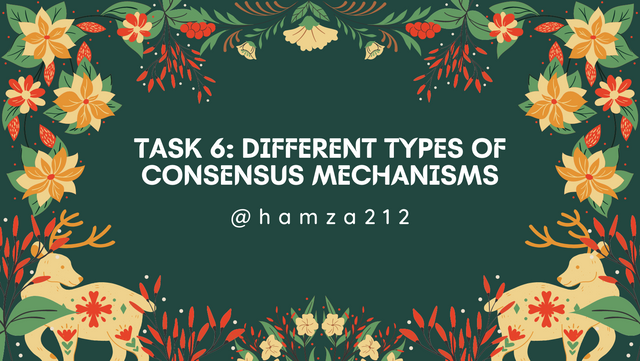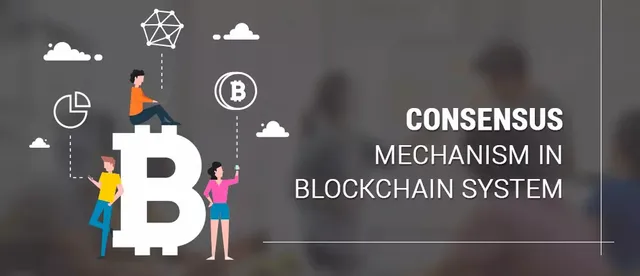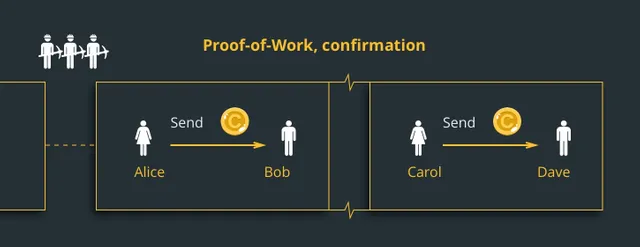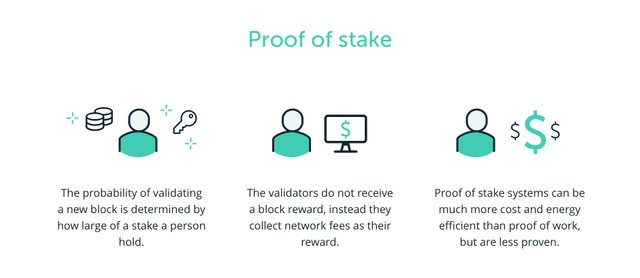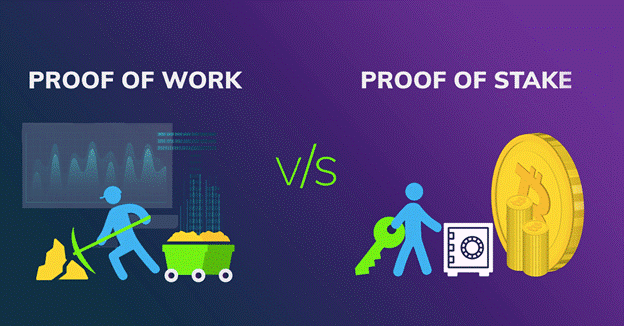Different types of Consensus Mechanisms - Crypto Academy Season 5 Beginners' course - Task 6

(1) What is the difference between PoW & PoS? Advantages & Disadvantages? Which one is better in scaling Capacity? Examples?

The Consensus Mechanisms
Blockchain is a term related to decentralization and the foundation of cryptocurrencies. However, blockchain is not only important for cryptocurrencies, but also for decentralization as a system. Why? The reason is that just like databases, blockchain as a system is used to record and compile user transactions immutable and uncompromising, which also does not allow any third-party interference as a result of its p2p system.
Furthermore, blockchain appears to be a duplicate of a digital chronicle, divided into parts and distributed among all blockchain nodes. One of the main problems in the past that blockchains were able to solve was the trust problem. For example, if I create a new currency, say HMZ dollars, how can you be sure that I won't give myself millions of dollars HMZ or steal yours?
A normal database cannot solve this problem because it is a centralized system where someone is in control and as a result can change the entries such as adding millions of dollars and to himself. Blockchains that vary from normal databases are designed to address this problem. Being a decentralized system, it grants full authority to its users, thus eliminating the centralized authority system in such a way that the coins cannot be counterfeited, spent, or hacked, this solves the problem of trust.
In fact, the problems of trust and security cryptography in the world are solved by decentralized blockchain systems, but since in a decentralized system or platform, the control authority is shared among users, questions arise about how they should do things and how to make decisions. These questions lead to a consensus.
Consensus is a situation where people reach a mutual or mutual agreement, but in this case, it refers to a situation where all peers or nodes on the blockchain determine whether a transaction is valid or not. On the other hand, since these nodes or users are not relatively close to each other, there is a system in which everyone will be involved to reach a consensus, the system is known and is called the Consensus Mechanism.
A consensus mechanism is a decision-making system implemented on a blockchain to agree on the state of the network between shared users or nodes. This ensures that all users/nodes are aligned to approve valid transactions added to the blockchain.
The consensus mechanism works in such a way as to ensure the validity and authenticity of transactions, as well as trust, security, and agreement on the blockchain. Following are the various consensus mechanisms used by various blockchains:
- Proof-of-Work (PoW),
- Proof-of-Stake (PoS),
- Delegated Proof-of-Stake (DPoS),
- Practical Byzantine Fault Tolerance (PBFT),
- Proof-of-Capacity (PoC), Proof-of-Activity (PoA),
- Proof-of-Publication (PoP),
- Proof-of-Burn (PoB), etc.

Proof of Work
Proof of Work is a mining system where a node gets coins for mining a block. In this mining system, the first node to solve a complex mathematical puzzle receives a certain number of coins. The solved algorithm is then added to the next block in the blockchain and the system starts from scratch. PoW is about actively participating in data block verification, as well as transaction verification, which results in the production of new coins.
On the other hand, it authorizes the decentralized system to reach consensus or decide on issues such as order of transactions and account balances. With this, the double spending of coins exits the program and the chain cannot be changed. By using calculations and energy, PoW protects them from attacks. PoW also uses complex puzzles, hashes, and cryptography to ensure that digital chronicles remain immutable.
Changing the shape or structure of a blockchain requires one to have large hardware and computing power capable of solving very complex algorithms. This is the reason why Proof of Work as a blockchain network is secure.

Proof of Stake
Proof of Stake comes into play as a replacement for proof-of-work and was first launched in 2011 on Bitcointalk. Regarding the market cap of the network that installs it, PoS is the second most prominent consensus mechanism after PoW.
The PoS blockchain is maintained by validators and the validation process is known as forging and for a node to participate in the block creation process, the request is to stake the original currency. Generally, to become a validator, a person is expected to have a certain minimum amount of tokens in his wallet, this implies that the higher the amount in his wallet (known as betting power), the higher the prize or prize.
Nodes in PoS are rewarded with newly minted transaction fee coins in proportion to the amount in their wallet or stake. PoS is more advanced in terms of scalability and transaction speed and is known for printing.

Difference between PoW & PoS
| No | PoW | PoS |
|---|---|---|
| 1 | Needs large quantities of energy, for which miners may sell their coins to afford the bill | Offers mining power in proportion to the number of coins held by a miner |
| 2 | Initial consensus algorithm in Blockchain technology, for confirming transactions and adding new blocks to the chain | Invented as an alternative to PoW |
| 3 | Verification of new block is based on processing power | Verification of new block is based on staking power |
| 4 | Miners are rewarded with coins for solving a complex mathematics puzzle | Nodes are rewarded with a newly minted coin from transaction fees in proportion to the amount in their wallets or staking power |
| 5 | The network becomes susceptible to 51% attack if the number of miners for mining coins is less than required | The attacker would need to acquire 51% of the cryptocurrency to carry out a 51% attack |

Advantages of Pow
Cryptocurrency In, Pow is considered more secure because it works on a decentralized system
A hacker has to maintain 50% of the computing energy to add a malicious block in the blockchain algorithm. So, it is impossible to have a system practically.
Due to the decentralized blockchain technology, Pow is more secure and reliable for cryptocurrency transactions. People tend to rely more on decentralized cryptocurrencies as it safeguards their privacy and personal data.
In PoW, the miner get reward for solving complex puzzles which is very beneficial for miners because they to get rewards for their hard work.
Disadvantages of Pow
Although PoW has many advantages, it also lacks in several respects, namely as follows:
In PoW a lot of energy is required to mine the digital currency which is made very expensive. A miner needs to invest a kiss amount in computer hardware and other related technologies for mining setup.
Play, there are certain limits for creating new blocks in blockchain technology. In bitcoin, blocks can be withdrawn every 10 minutes. Pow compares less if we compare it with Pos.

Advantages of PoS
Proof of Stake has a faster transaction turnover compared to PoW. Transactions can be done quickly on Proof of Stake.
In PoS, digital currency mining is less energy efficient and does not require computer equipment or expensive energy resources.
It is very convenient for users to access from any computer or smartphone with the help of internet. So this feature makes it very useful for users.
Due to lower power consumption, Proof of Stake is harmless to the environment and does not harm the atmosphere.
Disadvantages of PoS
In PoS, there is always a locked percentage in the system which is very unfriendly to miners because they get low rewards on Stack Test.
Because the system is centralized, PoS is less secure than Proof of Work. The decentralization keeps user transactions safe and maintains privacy.
In Publishing, rewards for miners are low compared to proof-of-work rewards. To get rewarded in this system, miners need to earn a share.

Scaling Capacity
Thanks to lower power consumption and faster transaction times, PoS is more scalable than PoW. Also, PoS offers various solutions to the scalability problem of Bitcoin and is best for ease of use, and it does not require any mining software or hardware.
Below are the top coins of PoW:
Below are the top coins of PoS:

Conclusion
The consensus mechanism is the method used by the blockchain to generate agreement, trust, and security. It is an egalitarian, participatory, collaborative and inclusive way to reach agreement on transactions and other issues such as blockchain.
So many thanks to Sir @sapwood for this lecture.
